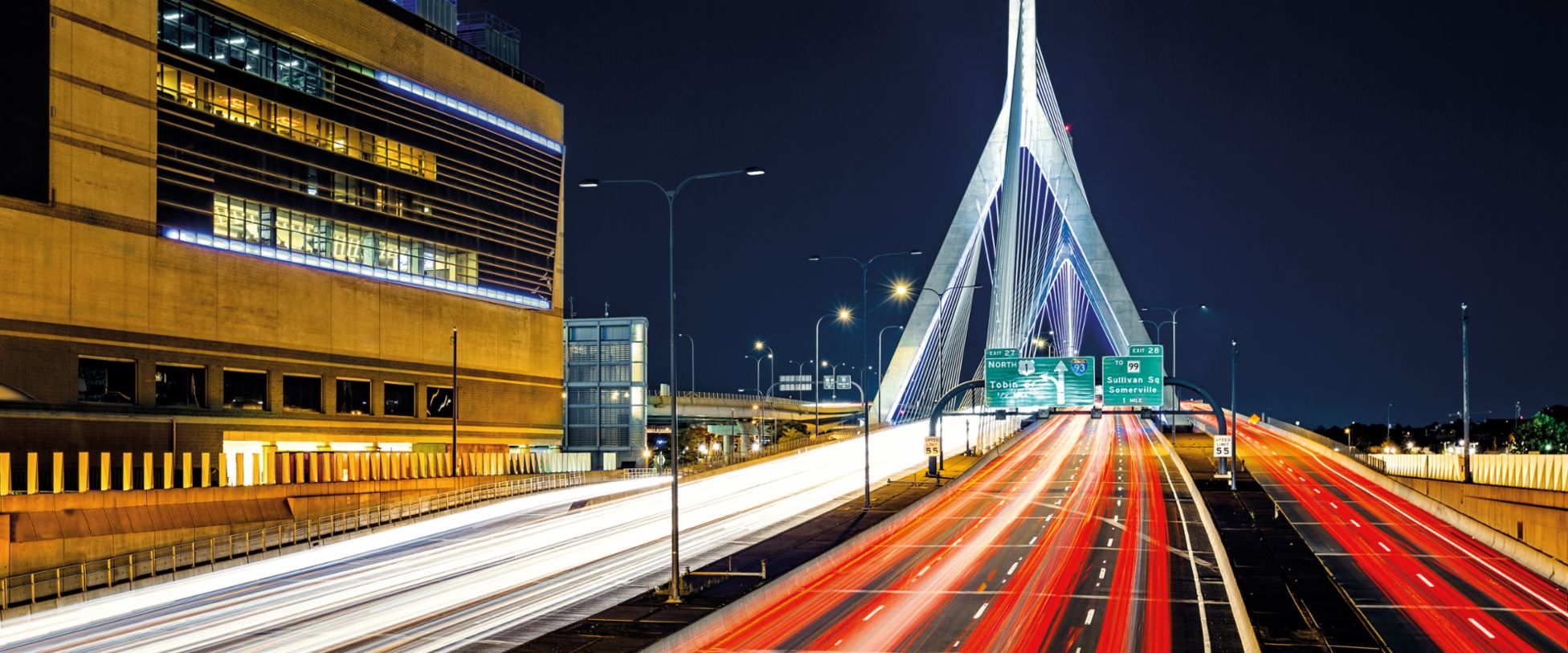Energized City
Boston wants to achieve full climate neutrality and is charting a completely new course to get there. The city won’t ban cars from its center. They’ll still be welcome in the future—if they’re electric.
A city on the move:
Boston wants to be climate-neutral by 2050 at the latest. A specific plan of action is expected to be announced in 2020.
“The Carbon Free Boston report lays the groundwork for Boston’s next climate plan, which will make the city climate-neutral by 2050,” says Peter Fox-Penner. After a well-timed pause, he points to a thick binder. “But I think we’ll get there before then.”
Fox-Penner, who is sixty-four, knows what he’s talking about. When it comes to climate-neutral solutions for Boston, no institution or individual in the city is as well connected as Boston University and the director of its Institute for Sustainable Energy. Fox-Penner is co-principal investigator for this year’s Carbon Free Boston report, a study that brought him together with 120 experts from all parts of society, including representatives of religious communities, environmental activists, real estate developers, university presidents, and providers of healthcare, electricity, gas, and heat. Even Charlie Baker, governor of Massachusetts, was involved. “If you want to achieve something in Boston,” says Fox-Penner, “you have to get all the stakeholders on board.”
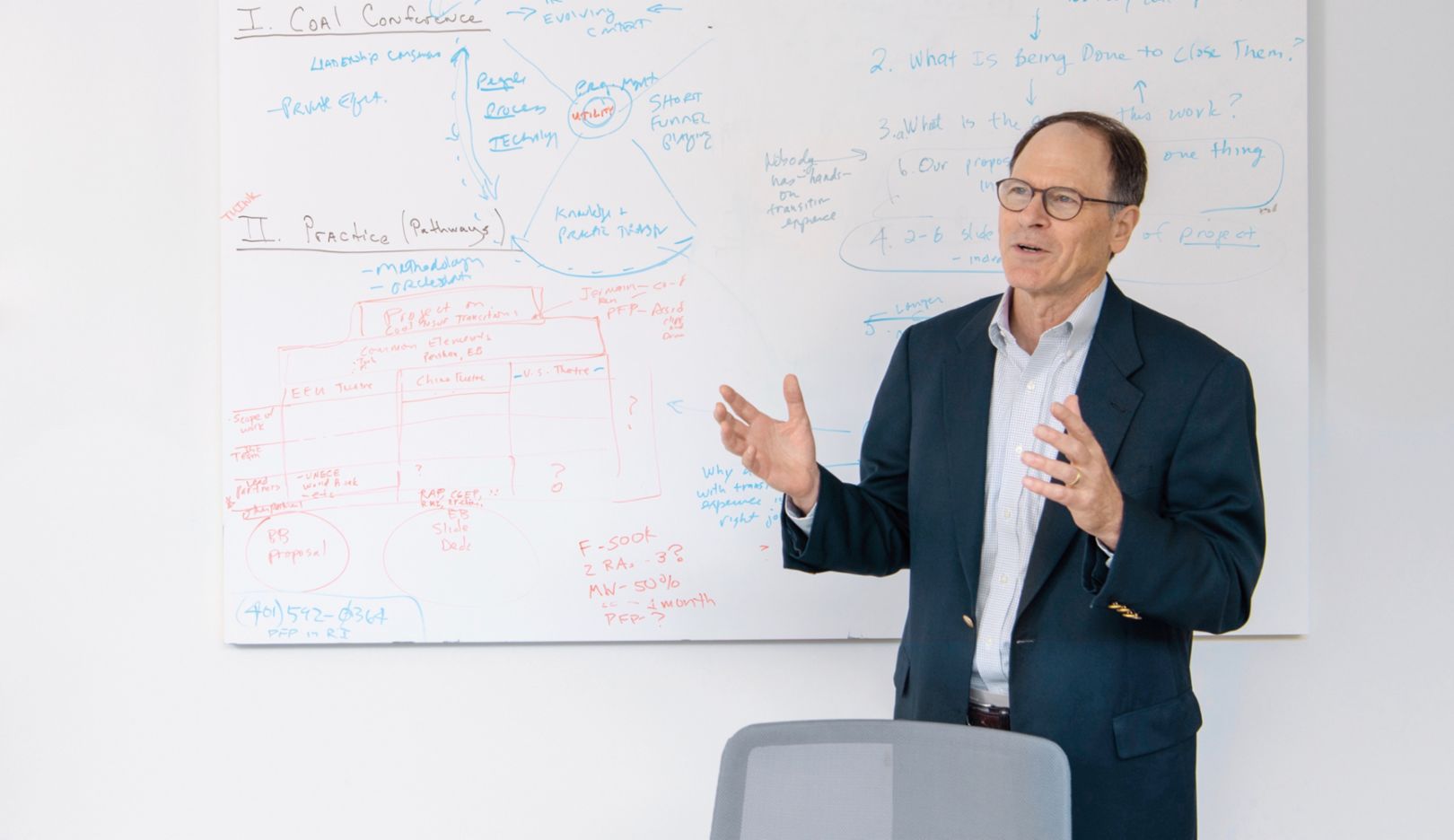
“It’s simple: electric cars are so much better.” Peter Fox-Penner
The city is charting its course together. Bostonians are facing some major challenges. To increase the quality of life—with lower air pollution, safer streets, and higher productivity—for everyone in this East Coast metropolis, plans call for designing the expansion of its centuries-old infrastructure over the coming years in such a way that it produces less carbon dioxide than it absorbs. Efforts are focusing on four key areas: buildings, energy, waste, and transportation.
Climate neutrality by 2050? That sounds possible. But the figures reveal the sheer magnitude of the task. Take traffic, for example. Boston has a population of just under seven hundred thousand, and its metropolitan area has a good four and a half million. Commuters dramatically raise traffic levels in the city center on weekdays, when up to a million people come and go—most of them in cars. Only one in three currently uses public transportation. That leads to huge levels of congestion in the twisted mass of streets, some of them underground. According to the Global Traffic Scorecard from INRIX, an American company that analyzes mobility trends, Boston has more congestion than any other city in the USA. Drivers spend an average of 164 hours a year stuck in traffic—considerably more than their counterparts in New York (133 hours) or Los Angeles (128 hours).
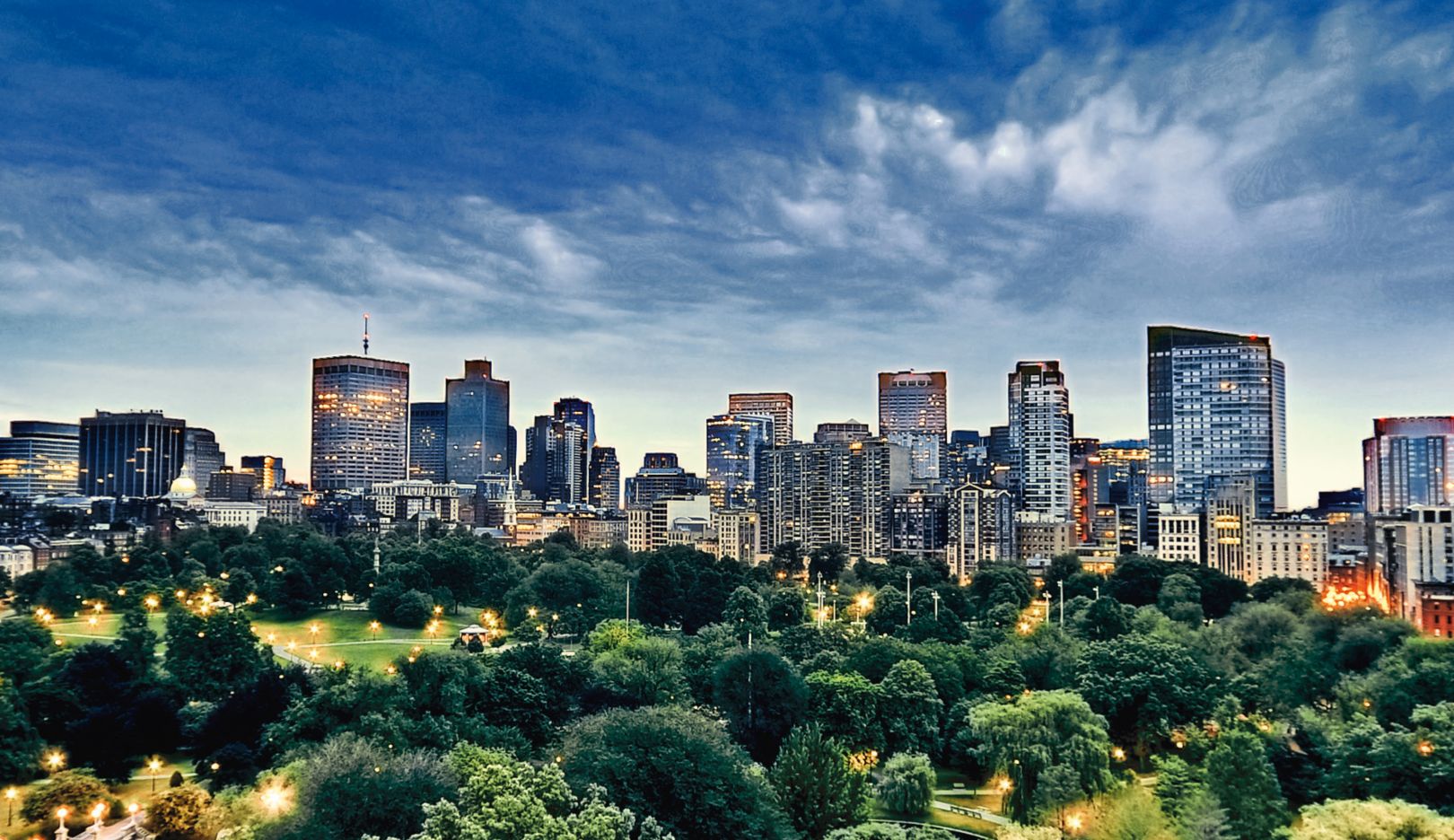
More green spaces for Boston:
Adding more parks over the next few decades will help improve the air quality while also lowering the higher air temperature in the urban area.Use of private cars is the biggest source of emissions in Boston. It accounts for nearly 70 percent of all trips. The cars often carry only one person, and most of the vehicles are powered by fossil fuels. Moreover, experts expect Boston’s economy to grow and the population of its metropolitan area to rise as a result. The number of cars on Boston’s streets could increase from the current number of around 450,000 to 460,000 by 2050. In light of this situation, what options are open to the city if it wants to become climate-neutral?
Many of the world’s big cities would seek to replace private cars with public transportation, car sharing, and two-wheeled mobility options. And encourage their residents to cover short distances on foot. Or at any rate not in their cars. Incentives include cheaper bus tickets, more bike paths, and the availability of electric scooters. Other options include tolls on passenger vehicles, such as London’s Congestion Charge, instituted back in 2003 for entering a particular zone on weekdays. Planners in Boston are thinking along similar lines, without wanting to remove private traffic from the city center altogether. To achieve the aim of climate neutrality by 2050, the number of private cars must be reduced. A general ban on cars, however, is not planned. Instead, those allowed will need to run exclusively on green power.
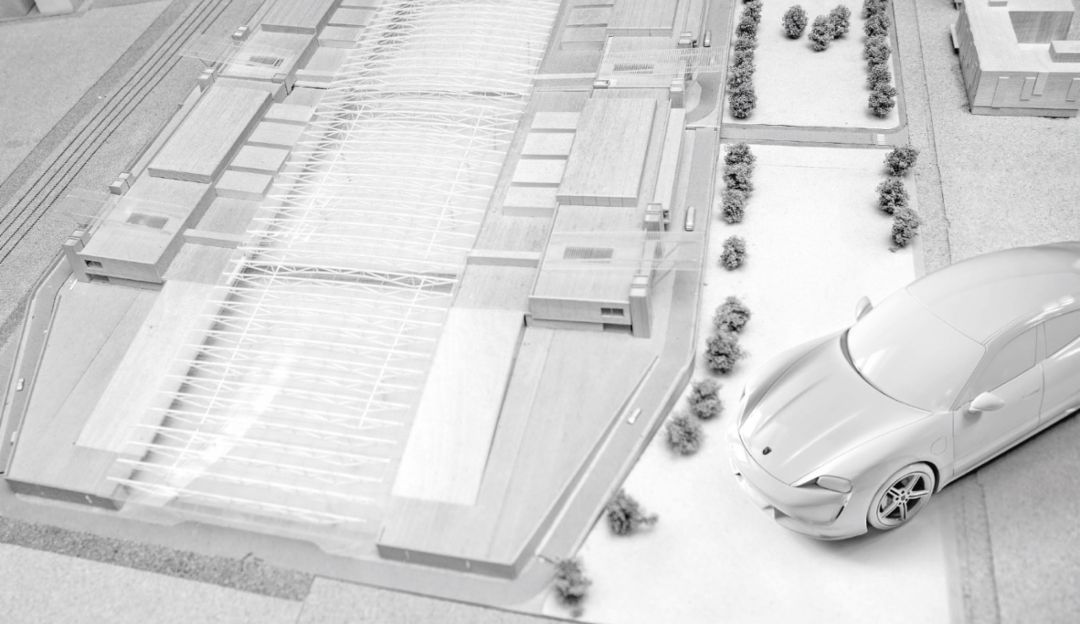
Electric cars wanted:
Only cars with electric drives are expected to be allowed in Boston by 2050.In so doing, the harbor town is taking a markedly different approach than a city like Oslo, which is this year’s European Green Capital. Oslo’s municipal government had originally planned to make the city car-free by 2019, but withdrew its plan in the face of strong opposition by residents and businesses. At least for now. But the city officials did remove some parking spaces and block some streets to cars either permanently or provisionally.
In Boston, preparations for shifting to a different culture of mobility with a focus on electricity are underway with the help of technological innovations like those being tested in its Street Labs project. Smart traffic systems using cameras and sensors are expected to regulate speed and help traffic flow more smoothly.
Kris Carter, a thirty-eight-year-old city official, is in charge of this project. Together with a colleague, he heads New Urban Mechanics. This research and design team, which reports directly to Mayor Martin Walsh, is unique in the world. Another indication of its importance is the fact that Carter’s office is directly adjacent to that of the mayor. Carter concentrates on key aspects of urban life in the future: housing, health, and transportation. “There’s much we can change today,” Carter explains. “But we’re also looking at what will make sense in fifteen to twenty years.”
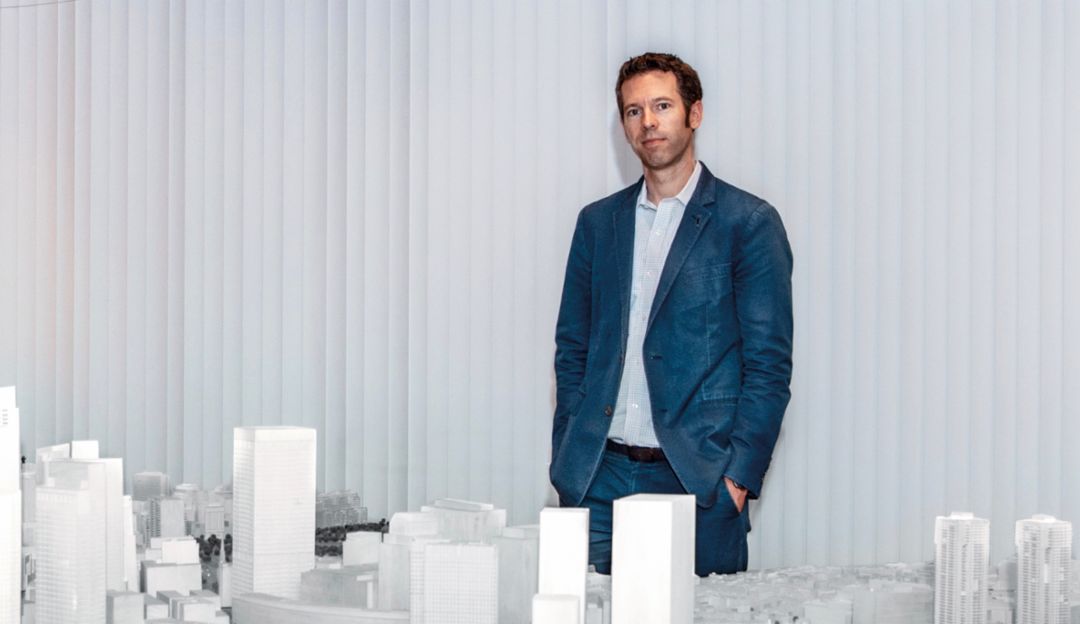
“We’re looking at what will make sense in fifteen to twenty years.” Kris Carter
By then, autonomous driving systems could be very close to reaching level five, or complete automation without any human intervention. Wouldn’t the easiest thing be for Boston to announce that it’s switching to autonomous vehicles and thereby turn the vision of an essentially self-regulating flow of traffic into a clearly defined goal? The city already presented an initial study on self-driving vehicles three years ago, which it conducted together with the Boston Consulting Group and the World Economic Forum. “Among other things, the study showed that people want self-driving cars that can be shared and that run on electric power in order to protect the climate,” says Carter, who doesn’t think that individual car ownership will disappear. “The study also showed there’s a group of people who will always want to drive on their own.”
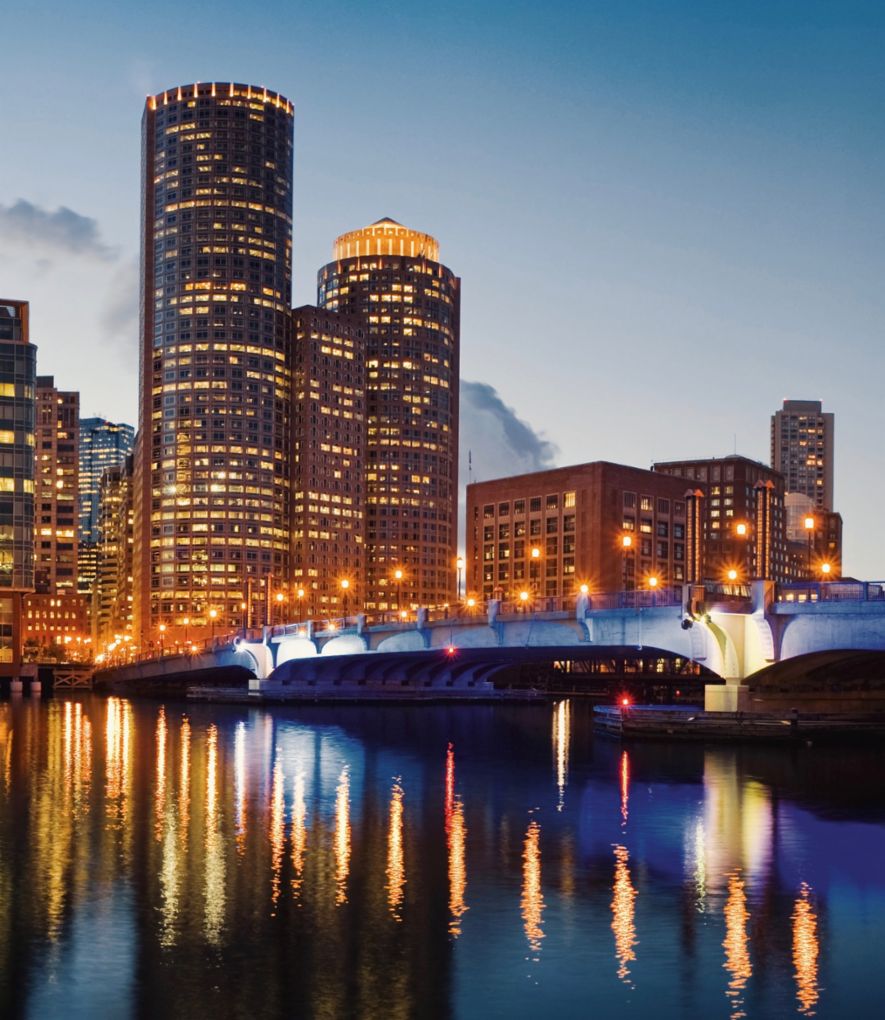
Future vision for Boston:
Smart street systems that use cameras and sensors to regulate speed and help traffic flow smoothly.However, potential improvements resulting from self-driving vehicles are still considered speculative at this point, according to the Carbon Free Boston report. Trials are underway in some cities around the world, although only in selected zones. Planners in Boston didn’t think it expedient right now to extrapolate from them to an entire urban area.
But Fox-Penner is thinking ahead of his time. The university professor already owns a fully electric VW Golf. “I bought it one and a half years ago, and it has a range of two hundred kilometers,” he says, adding that “it’s a lot of fun to drive.” On the path to climate neutrality in 2050, his Boston model will have set a precedent. “People won't go back to their old cars once they've driven electric.” Why? “It’s simple: electric cars are so much better.”
Photos by
Deejpilot, Ultima_Gaina, Shobeir Ansari (all Getty Images)
